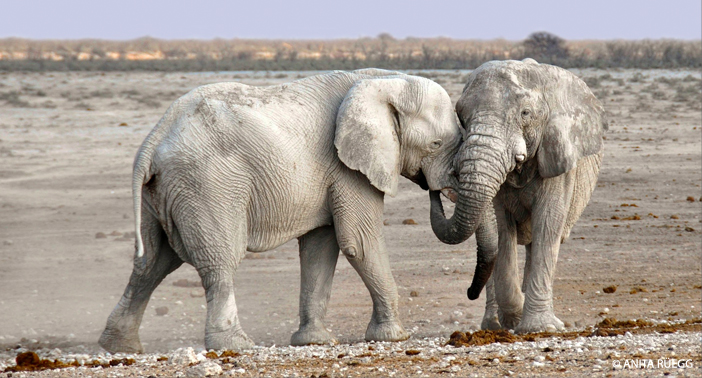There were some individuals who were special. I am thinking of Rafiki (meaning ‘friend’ in Kiswahili) with her twin calves. I first saw them when they were only a couple of weeks old. It was when Derek Bryceson, my former husband, was Director of Tanzania National Parks. I had suggested that we might train park rangers to follow and observe elephants in the same sort of way as our field staff follow chimpanzees at Gombe. Ian Douglas-Hamilton agreed to give some workshops for rangers from the Ruaha, Tarangire and Manyara national parks. Four rangers from each of the parks were assigned to elephant observation, following in teams of two at a time.
We heard about the twins soon after they were born. Derek and I spent hours watching them over the months that followed. It was enchanting to see both of them suckling at the same time. Rafiki was a wonderful mother, gently caressing the twins with her trunk, huge ears flapping, as the family rested in the shade of acacia trees. She was so watchful and protective when they travelled over rocky terrain.
Then there was Fred, a juvenile male who was a real show off – full of mischief and energy. He would chase anything – cattle egrets, antelopes, warthogs – charging towards them, trumpeting fiercely, ears spread out like wings. Once I saw him chase a butterfly! Sometimes he upset one of the calves in his group, and then the mother would discipline him with a warning toss of her head.
Another elephant I loved was a very ancient male, Ahmed. He was so old that all his skin was loose on his body. It hung around his ankles and under his tummy in folds. His ears drooped. He moved slowly and deliberately, and was quite often by himself. When he rested in the shade he would drape his trunk over one of his tusks, as though it was getting too heavy for him.
And then there was Virgo. She was the favourite of Ian Douglas-Hamilton and he introduced me to her in Manyara National Park, site of his famous study. He had known her since her birth, and when he located her we drove up close, then got out of the car. I held out my hand, and she reached to touch it gently, so gently, with her trunk. Virgo, I shall never forget you.



